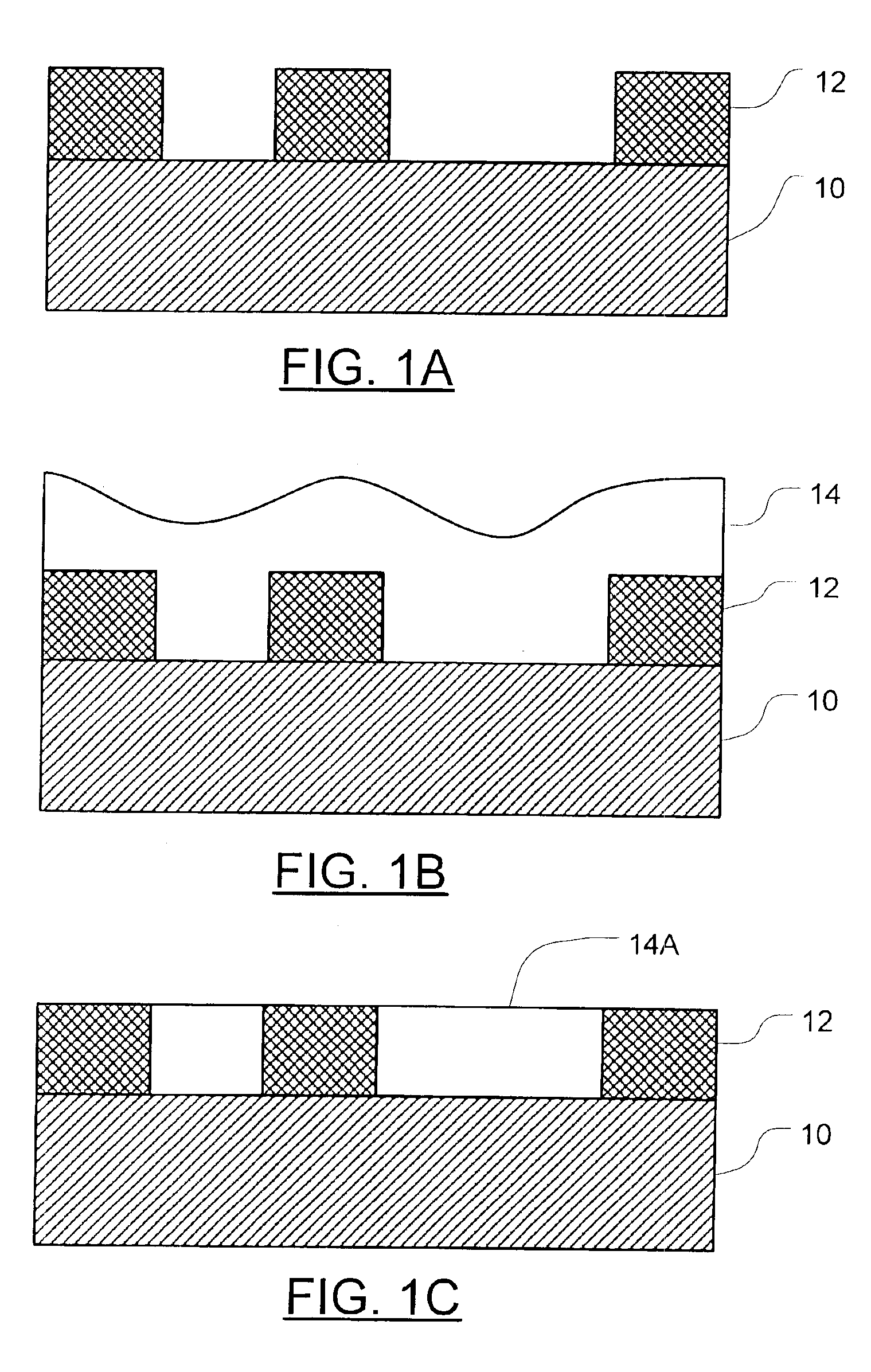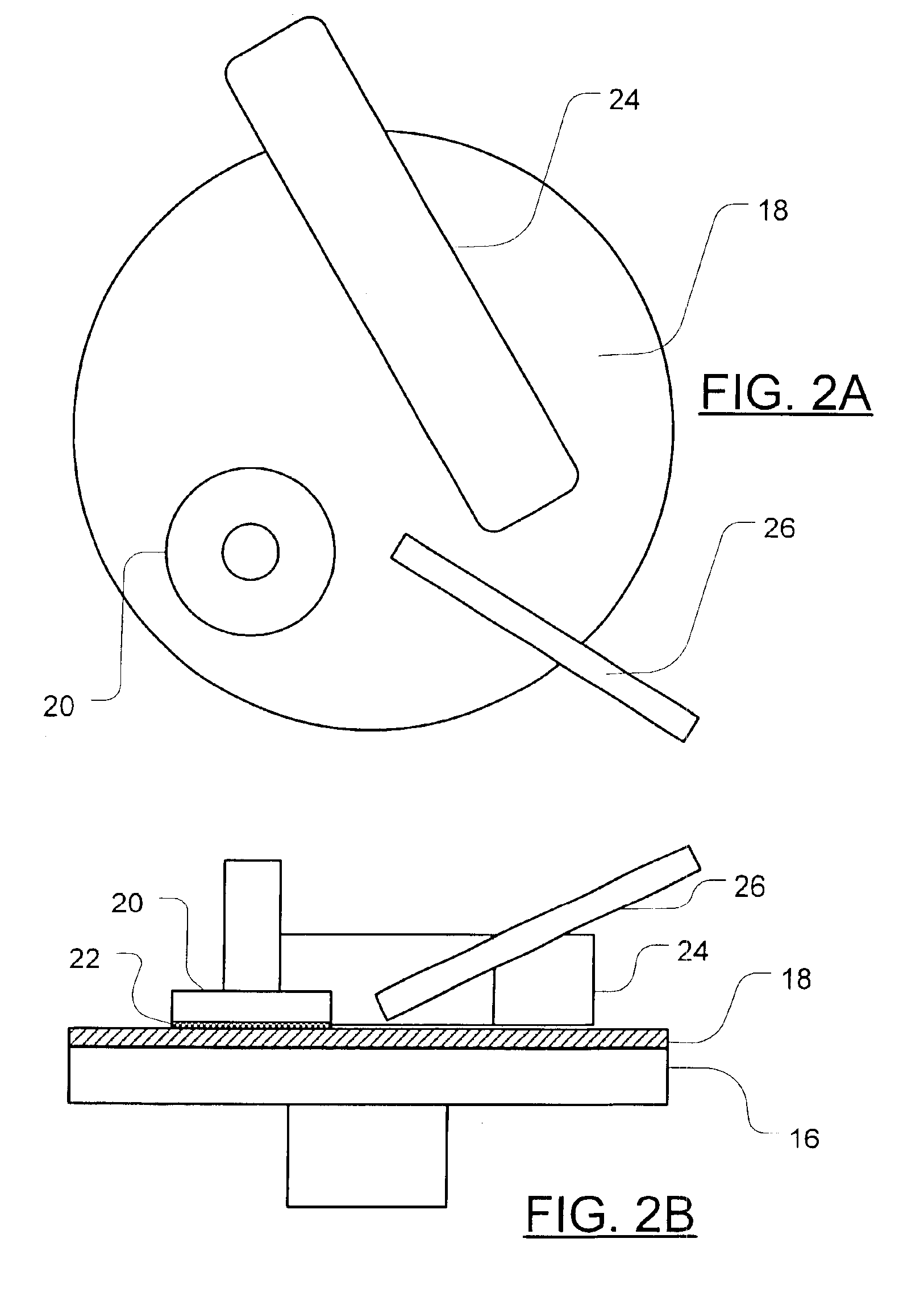Materials and methods for chemical-mechanical planarization
a semiconductor substrate and chemical-mechanical technology, applied in the direction of manufacturing tools, abrasive surface conditioning devices, lapping machines, etc., can solve the problems of affecting and affecting the ability to precisely position, etc., to achieve the effect of improving one or more, reducing cost, and increasing the uniformity of the planarized surfa
- Summary
- Abstract
- Description
- Claims
- Application Information
AI Technical Summary
Benefits of technology
Problems solved by technology
Method used
Image
Examples
example a1
[0138]An exemplary polyurethane, composition A1, was prepared by combining:[0139]80 parts WITCOBOND A-100 (WITCO Corp.);[0140]20 parts WITCOBOND W-240 (WITCO Corp.);[0141]15 parts surfactant (consisting of 9 parts STANFAX 320, 3 parts STANFAX 590, and 3 parts STANFAX 318) (Para-Chem Southern Inc.);[0142]8.5 parts ACUSOL 810A (as a viscosity modifier / thickener) (Rohm & Haas); and[0143]100 parts 500 nm ceria particles
to form an aqueous dispersion (all parts reflecting dry weight). The polyurethane dispersion was then allowed to stand for approximately one hour to stabilize the viscosity at about 9500 cps. The polyurethane dispersion was then frothed using an OAKES frother to produce a froth having a density of approximately 1040 grams per liter and applied to a polycarbonate substrate to a thickness of about 1.5 mm. The froth was then cured for 30 minutes at 70° C., 30 minutes at 125° C., and 30 minutes at 150° C. to form a foam product comprising a fixed abrasive material having a fo...
example a2
[0145]Another exemplary polyurethane composition, composition A2, was prepared by combining:[0146]60 parts WITCOBOND A-100;[0147]40 parts WITCOBOND W-240;[0148]15 parts surfactant (consisting of 9 parts STANFAX 320, 3 parts STANFAX 590, and 3 parts STANFAX 318);[0149]8.5 parts ACUSOL 810A (as a viscosity modifier / thickener); and[0150]70 parts 500 nm ceria particles
to form an aqueous dispersion. The polyurethane dispersion was then allowed to stand for approximately one hour to stabilize the viscosity at about 10,000 cps. The polyurethane dispersion was then frothed using an OAKES frother to produce a froth having a density of approximately 970 grams per liter and applied to a polycarbonate substrate to a thickness of about 1.5 mm. The froth was then cured for 30 minutes at 70° C., 30 minutes at 125° C., and 30 minutes at 150° C. to form a foam product comprising a fixed abrasive material having a foam density between about 0.75 and 0.95 g / cm3.
example a3
[0151]Another exemplary polyurethane composition, composition A3, was prepared by combining:[0152]20 parts WITCOBOND A-100;[0153]80 parts WITCOBOND W-240;[0154]15 parts surfactant (consisting of 9 parts STANFAX 320, 3 parts STANFAX 590, and 3 parts STANFAX 318);[0155]8.5 parts ACUSOL 810A (as a viscosity modifier / thickener); and[0156]70 parts 500 nm ceria particles
to form an aqueous dispersion. The polyurethane dispersion was then allowed to stand for approximately one hour to stabilize the viscosity at about 10,000 cps. The polyurethane dispersion was then frothed using an OAKES frother to produce a froth having a density of approximately 970 grams per liter and applied to a polycarbonate substrate to a thickness of about 1.5 mm. The froth was then cured for 30 minutes at 70° C., 30 minutes at 125° C., and 30 minutes at 150° C. to form a foam product comprising a fixed abrasive material having a foam density between about 0.75 and 0.95 g / cm3.
PUM
| Property | Measurement | Unit |
|---|---|---|
| Fraction | aaaaa | aaaaa |
| Fraction | aaaaa | aaaaa |
| Fraction | aaaaa | aaaaa |
Abstract
Description
Claims
Application Information
 Login to View More
Login to View More - R&D
- Intellectual Property
- Life Sciences
- Materials
- Tech Scout
- Unparalleled Data Quality
- Higher Quality Content
- 60% Fewer Hallucinations
Browse by: Latest US Patents, China's latest patents, Technical Efficacy Thesaurus, Application Domain, Technology Topic, Popular Technical Reports.
© 2025 PatSnap. All rights reserved.Legal|Privacy policy|Modern Slavery Act Transparency Statement|Sitemap|About US| Contact US: help@patsnap.com



